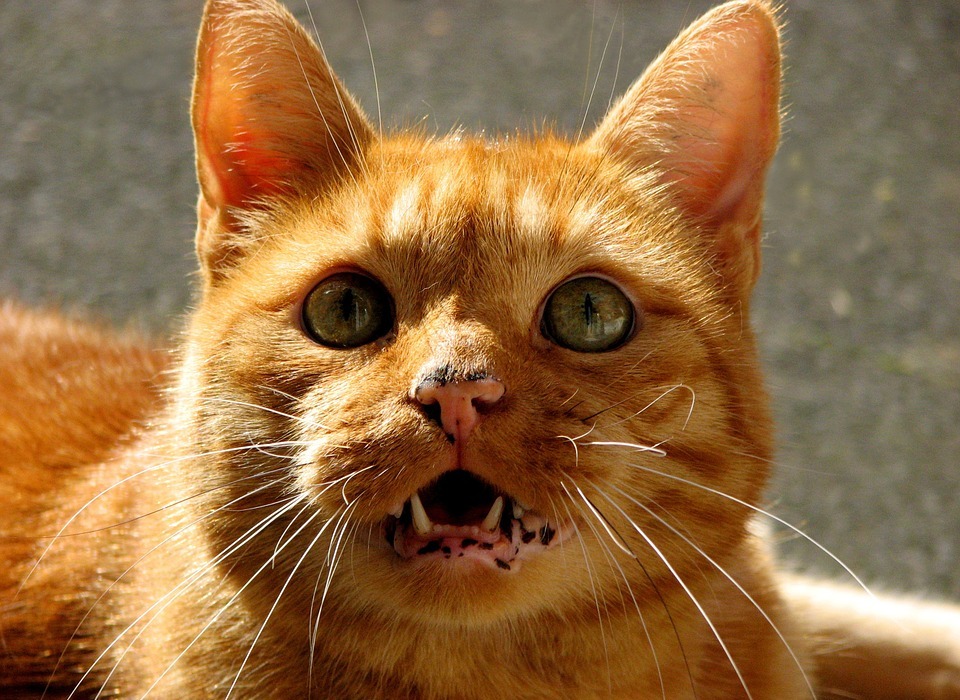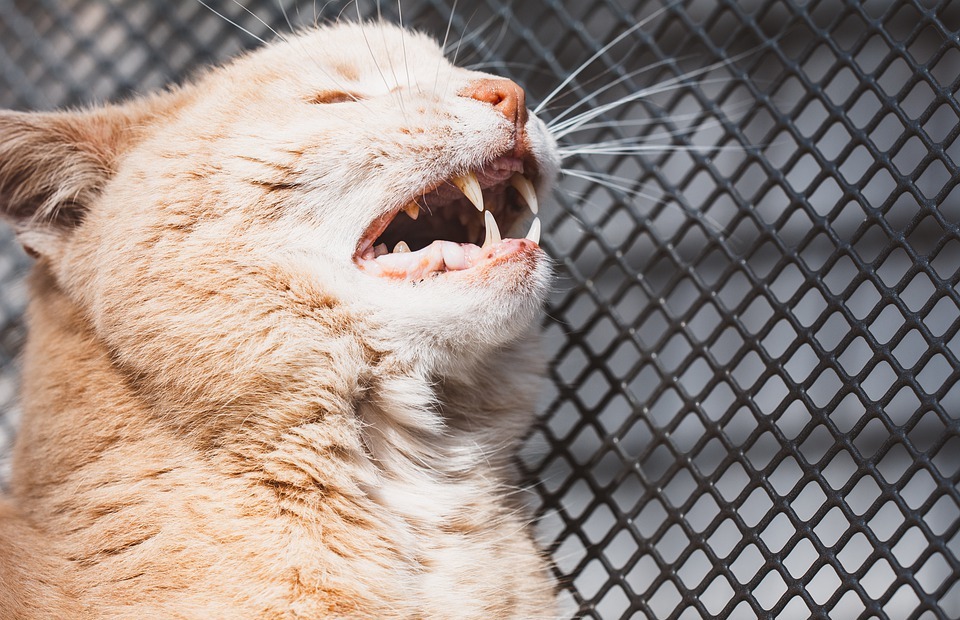The enduring myth of the cat's nine lives has captivated humans for centuries, painting a picture of feline resilience and uncanny ability to escape danger. But is there any truth to this seemingly magical notion? This article delves into the origins of this beloved myth and scrutinizes its validity in light of scientific understanding. We will examine the physiological adaptations that contribute to feline survival, explore the reality of their survival rates in falls, and ultimately separate myth from fact.
Part 1: The Origins of the Nine Lives Legend

1.1 Ancient Egyptian Roots: Goddess Bastet and Feline Divinity
The belief that cats possess multiple lives traces its roots back to ancient Egypt, where felines were revered as sacred creatures. The goddess Bastet, often depicted with a cat's head, was worshipped as the protector of homes, children, and fertility. Her association with the afterlife and the cyclical nature of life and death likely contributed to the idea of cats having multiple lives.
1.2 Medieval Superstitions and the "Cat's Curse"
During the Middle Ages, cats were held in high regard for their ability to control rodent populations. However, their association with the supernatural, often linked to witchcraft and sorcery, led to persecution. The "cat's curse," a belief that felines were agents of evil, further fueled the myth of nine lives, perhaps as a way to explain their uncanny survival skills and perceived connection to the dark arts.
1.3 The Evolution of an Idiom: The Cat's "Nine Lives"
The phrase "a cat has nine lives" likely emerged from a combination of these cultural beliefs. It became a common idiom used to describe someone who seemed to escape danger repeatedly, signifying both luck and the perceived magical nature of cats. Over time, the phrase has been embedded in literature, folklore, and popular culture, solidifying the enduring image of the cat with multiple lives.
Part 2: The Anatomical and Physiological Secrets of Feline Survival

2.1 The Flexible Spine: The Key to Landing on Their Feet
Cats possess an incredibly flexible spine, a key factor in their survival during falls. Unlike humans, their spine can bend and contort in ways that allow them to twist and turn in midair, adjusting their body position to prepare for landing. This flexibility gives them a remarkable ability to land on their feet, even after tumbling from seemingly insurmountable heights.
2.2 The Righting Reflex: A Brain-Controlled Maneuver
The "righting reflex" is a crucial physiological adaptation that allows cats to orient themselves during a fall. This reflex, triggered by the vestibular system in the inner ear, senses changes in body position and gravity. The feline brain then sends signals to muscles, causing a series of twists and turns that help the cat align its body to land on its feet.
2.3 The Role of Agility and Reflexes: A Blend of Instinct and Physical Prowess
Beyond their flexible spines and righting reflexes, cats are naturally agile and possess lightning-fast reflexes. This combination of physical capabilities allows them to react quickly to changes in their environment, navigate tight spaces, and evade potential threats with remarkable ease. Their acute senses of sight and hearing further enhance their ability to perceive danger and respond swiftly.
Part 3: The Reality of Feline Survival Rates
3.1 Scientific Studies and the "Nine Lives" Myth
While the myth of nine lives suggests supernatural resilience, scientific studies reveal a more nuanced picture. Cats are certainly more resilient than humans in falls, but their survival rate is not infinite. Studies have shown that cats have a surprisingly high survival rate from falls, even from high buildings, but this does not translate to nine lives.
3.2 The Importance of Height: A Key Determinant of Survival
The height of the fall is a major factor in determining a cat's survival chances. Cats are more likely to survive falls from lower heights, as they have more time to activate their righting reflex and adjust their landing. However, the risk of injury increases significantly with greater heights, as the impact force becomes more powerful.
3.3 Factors Affecting Survival: Age, Landing Surface, and Other Variables
In addition to the height of the fall, other factors can influence a cat's survival chances. Younger cats tend to be more resilient due to their lighter weight and greater flexibility. The surface the cat lands on also plays a role, with softer surfaces like grass or bushes absorbing impact better than hard surfaces like concrete or asphalt. Furthermore, a cat's overall health and any pre-existing conditions can impact their ability to recover from a fall.
Part 4: Debunking the Nine Lives Myth: Science vs. Folklore
4.1 The Limits of Feline Resilience: Cats Are Not Invincible
While cats are incredibly resilient, they are not immune to injury or death. Even with their remarkable adaptations, they can sustain serious injuries, including broken bones, internal bleeding, and even death from falls or other accidents. The myth of nine lives perpetuates a dangerous misconception, suggesting that cats can withstand any trauma without consequences.
4.2 The Dangers of Falls: A Real Threat to Feline Safety
Falls are a serious threat to cats, regardless of their reputation for resilience. Even seemingly harmless falls can cause trauma to the head, spine, and internal organs. The myth of nine lives can lull cat owners into a false sense of security, encouraging them to underestimate the risks associated with falls.
4.3 The Importance of Prevention: Taking Steps to Protect Feline Friends
To prevent falls and safeguard their well-being, it's essential to take proactive steps to protect cats. This includes keeping windows and balconies closed or screened, installing cat-proof window guards, and avoiding placing furniture near windows or balconies. Supervise cats when they are near high places and be aware of potential hazards in your home.
Part 5: The Importance of Veterinary Care
5.1 The Need for Immediate Attention: When to Seek Professional Help
If a cat falls from a height, it's essential to seek veterinary attention immediately, regardless of whether the cat appears injured. Internal injuries may not be immediately evident but can be life-threatening if left untreated. A veterinarian can perform a thorough examination to assess for any injuries and provide appropriate treatment.
5.2 Recognizing Signs of Injury: Seeking Veterinary Care
Even if a cat seems to have escaped a fall unscathed, there are signs to watch out for that may indicate hidden injuries. These include limping, lethargy, vomiting, loss of appetite, or unusual behavior. If you observe any of these signs, contact your veterinarian immediately.
5.3 The Importance of Follow-Up Care: Ensuring Full Recovery
Following a fall, it's crucial to follow your veterinarian's instructions for post-fall care. This may include rest, pain medication, or physical therapy. Regular check-ups with your veterinarian will help ensure that your cat makes a full recovery and that any potential complications are addressed.
Part 6: The Legacy of the Nine Lives Myth
6.1 The Cultural Impact: The Myth's Role in Popular Culture
The myth of nine lives has had a profound impact on popular culture, shaping our perceptions of cats. It has contributed to the idea of cats as independent, mysterious, and even supernatural creatures, enhancing their mystique and captivating our imaginations.
6.2 The Cat's True Nature: Beyond the Myth
While the nine lives myth is a fun and enduring legend, it's important to understand that cats are complex animals with their own unique characteristics and needs. Their resilience and adaptability are remarkable, but they are not invincible. Appreciating the true nature of cats involves understanding their instincts, behaviors, and vulnerability, fostering a bond of respect and responsible care.
Part 7: FAQs
7.1 What is the highest a cat can fall from and survive?
While there's no definitive answer, studies suggest a high survival rate for falls up to seven stories. However, survival is not guaranteed, and serious injuries are possible.
7.2 Are there any specific breeds of cats that are more resilient than others?
All cats have similar anatomical features and instincts, but some breeds might exhibit slightly more agility or a stronger righting reflex. However, there's no scientific evidence to suggest any breed is significantly more resilient than others.
7.3 Do cats have a sixth sense that allows them to sense danger?
Cats have highly developed senses, but the concept of a "sixth sense" is not scientifically proven. Their acute senses of sight, hearing, and smell help them perceive their surroundings and react quickly to threats.
7.4 How can I protect my cat from falling from high places?
Keep windows and balconies closed or screened, install cat-proof window guards, avoid placing furniture near windows or balconies, and supervise your cat when near high places.
7.5 What should I do if my cat falls from a height?
Seek veterinary attention immediately, regardless of whether the cat appears injured. A veterinarian can assess for injuries and provide appropriate treatment.
Everyone is watching

Are Cat Ribs Flexible? Understanding Their Anatomy
CATS & KITTENSThis article delves into the fascinating world of feline anatomy, exploring the flexibility of cat ribs and ho...

Can Cats Eat Bananas? (Everything You Need to Know)
CATS & KITTENSThis article dives into the intriguing question of whether cats can safely enjoy the sweet, yellow fruit, bana...

Cat Lifespan: How Long Do Cats Live?
CATS & KITTENSThis comprehensive guide explores the factors influencing the lifespan of our feline companions, providing ins...

Can Cats Get COVID-19? What You Need to Know
CATS & KITTENSThis article will delve into the fascinating world of feline COVID-19 susceptibility. We'll explore whether ca...

Can Cats Eat Eggs? A Complete Guide to Egg Safety for Your Feline Friend
CATS & KITTENSWhen it comes to treating our furry companions, we all want to ensure we're doing what's best for them. Eggs...
